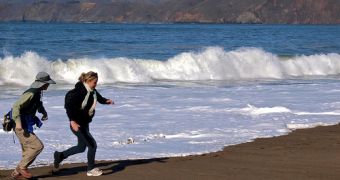El Nino along with climate change might just trigger the El Nino Modoki that causes long-term changes in the sea currents in the north Pacific Ocean, scientists reported online, in the journal Nature Geoscience.
Nobody knows exactly if El Nino Modoki appeared as a consequence of climate change on the traditional form of El Nino, even though last year, the journal Nature published an article that sustained this theory.
Whether climate change is behind this evolution has until now remained a debate, that could go on for a while, but in a new paper published in Nature Geoscience, there is evidence that El Nino Modoki triggers a certain climate pattern within the currents of the North Pacific, known as the North Pacific Gyre Oscillation (NPGO).
The El Nino phenomenon is a recurrent warming in the eastern tropical Pacific, that happens along the coast of South America.
During the last few years, scientists have noticed that the El Nino warming is stronger in the central Pacific, rather than in the Eastern Pacific.
This new phenomenon is called El Nino Modoki, Modoki being a Japanese word for saying 'similar' but 'different'.
Emanuele Di Lorenzo, associate professor in the School of Earth and Atmospheric Sciences at the Georgia Institute of Technology said that research has “found that El Nino Modoki is responsible for changes in the NPGO.
“The reason this is important is because the NPGO has significant effects on fish stocks and ocean nutrient distributions in the Pacific, especially along the west coast of the United States,” she added.
The North Pacific Gyre Oscillation phenomenon was actually named this way by Di Lorenzo and her colleagues, two years ago, in a paper published in Geophysical Research Letters.
The article explained for the very first time, the long-term changes in water circulation within the north Pacific, that scientists now relate to an ever rising number of dramatic changes of coastal marine ecosystems.
Di Lorenzo said that “the ecosystems of the Pacific may very well become more sensitive to the NPGO in the future.
“Our data show that this NPGO is definitively linked to El Nino Modoki, so as Modoki becomes more frequent in the central tropical Pacific, the NPGO will also intensify.”

 14 DAY TRIAL //
14 DAY TRIAL //